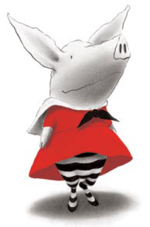So your book is doing great. You wrote it, released it, it looks terrific. You’ve got a few reviews under your belt. And now… it’s time for your next book.
Should you make it a brand-new story? Or should you write a “sequel” – spin off a series that somehow picks up where your last book left off?
Series books are proven winners in lots of ways: 26 of Amazon’s 100 Children’s Books to Read in a Lifetime (that’s over 1/4 of the best kids’ books of all time) are series books. Kids love them, teachers love them, librarians love them. And writers love them, too. Why?
Once kids are hooked on a series, they’ll read them one after the other, devouring them like Cheetos. If my kids are typical, and I think they are, they’ll often go back to the beginning once they’ve read them all. Series books also look great lined up side by side on a bookshelf (or in a bookstore!).
(Once you have a basic cover idea, it’s easy to think up clever variations!)
Will your book make it as a series? Here’s a three-step checklist to help you identify the most crucial elements that you’ll need to help turn it into a franchise instead of just a single standalone book.
1. Distinctive Character

The books that stand out – and the series that succeed – are usually the ones with a very strong lead character. Strong as in unforgettable.
 Think about Olivia, from the books of the same name by Ian Falconer. She’s a cute pig, but there are a million cute fictional pigs out there. Actually, Olivia isn’t particularly cute, but the drawings are strong and distinctive, as is her personality. I mean, she loves opera. How cool is that?
Think about Olivia, from the books of the same name by Ian Falconer. She’s a cute pig, but there are a million cute fictional pigs out there. Actually, Olivia isn’t particularly cute, but the drawings are strong and distinctive, as is her personality. I mean, she loves opera. How cool is that?
Is your character unforgettable? If so, read on…
2. Distinctive Setting
Your character’s world should be compelling enough to make you want to spin more than one story in it.






















